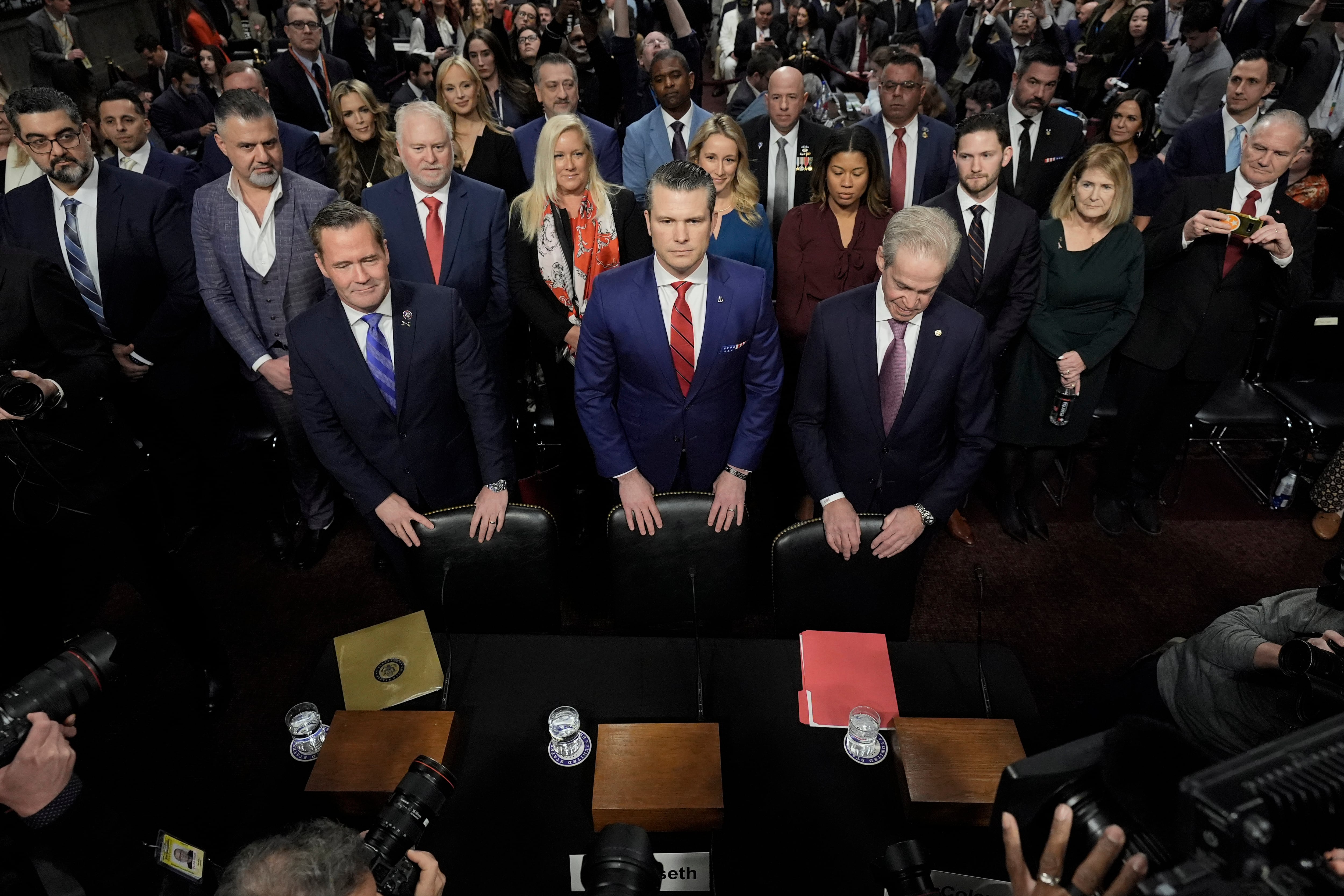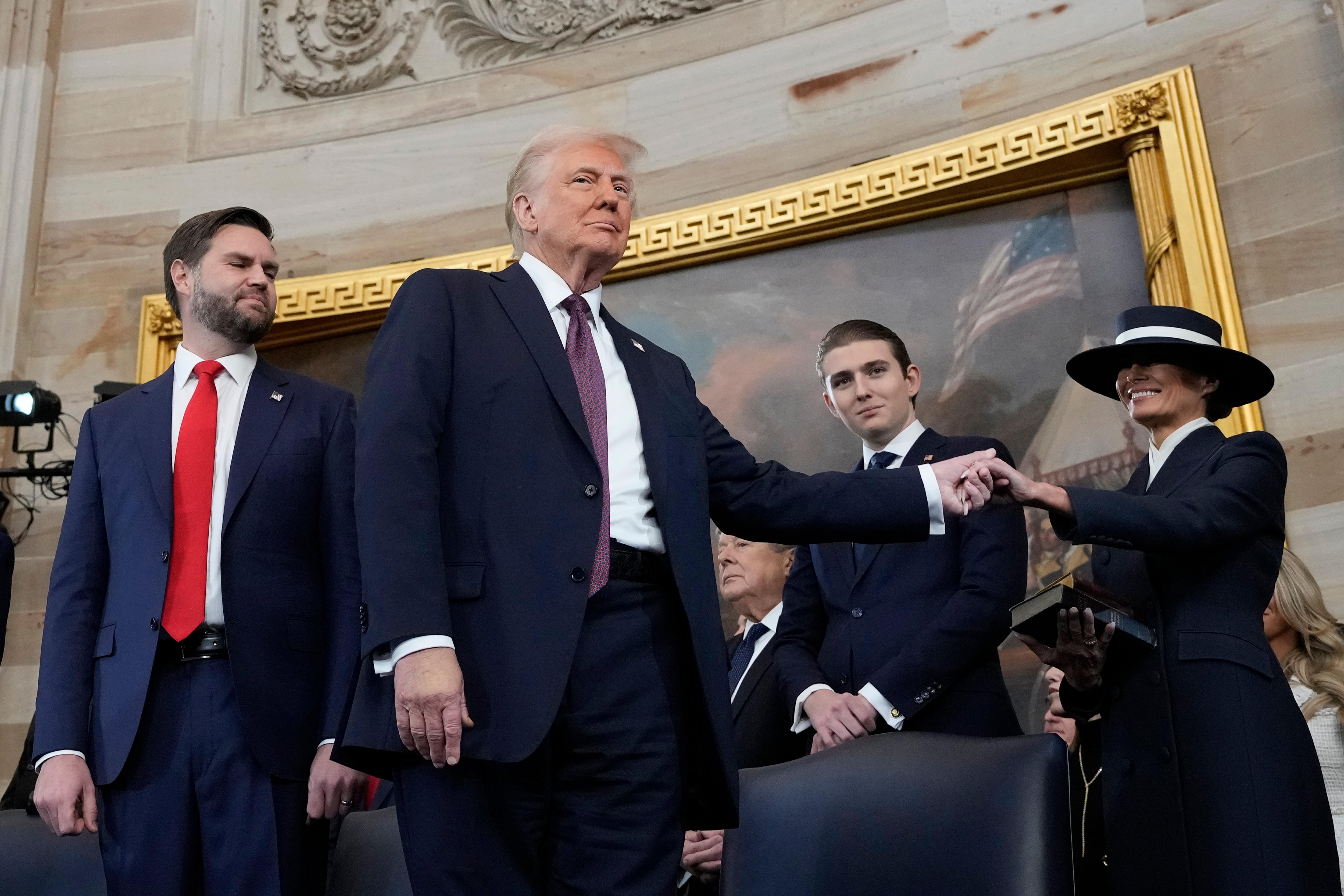WASHINGTON ― Expect artificial intelligence, command-and-control and survivability to be watchwords in the House Armed Services Committee going forward. Chairman Adam Smith says those topics will be his focus as he supports “smart” investments in national defense in the new Congress.
In an Oct. 14 interview, the often outspoken Smith, D-Wash., had more to add about a looming defense budget battle among Democrats and why he’s not worried about primary challenges from the left ― as well as national security plans under a possible Biden administration, and Smith’s own thoughts on retiring old weapons systems.
The comment came while former Vice President Joe Biden was leading President Donald Trump in the polls, and as the 2021 National Defense Authorization Act was being quietly negotiated in Congress.
You’ve said you want to engage Democrats in a “a rational, Democratic, progressive national security strategy.” What are the differences among Democrats?
In general, the Republican approach to defense has been: no matter what you’re spending, you are not spending enough, and that whatever threats you think are out there, they’re bigger and we’re less prepared for them. We went through this on missile defense and continue to ― and a missile defense program just last year got canceled. We spent a whole bunch of money on it because it didn’t work. [Strategic Forces Subcommittee ranking member and Ohio Republican Rep.] Michael Turner has unique way of putting this: Basically, any weapons program that we decided not to pursue amounts to unilateral disarmament because of the Russians.
[Note: Turner, in floor remarks this summer, characterized a proposed ban on nuclear weapons testing as “another one of these unilateral disarmament movement provisions." On the RKV, he and subcommittee chairman Rep. Jim Cooper, D-Tenn., probed the cancellation of the $1.2 billion program.]
They’re maximalists?
I view it as more political: We want to use national security to bludgeon Democrats, to make it appear that Democrats are not sufficiently pro-defense. Certainly, things go the other way in politics, but then that’s not a particularly helpful approach. I think we have to be smart about the money, smart about what our national security strategy is going forward.
On the Democratic side, we have, I think, rightfully resisted the idea that you can’t possibly spend enough money on DoD. I mean, number one, you have to balance needs within a finite budget. You have infrastructure, health care, education needs, and you’ve got to balance that against size of the deficit. So I think that’s the overwhelming majority opinion within the Democratic Party, and it’s reflected by Joe Biden.
The approach we would like to take is a center-left, pragmatic approach that recognizes, yes, we absolutely have threats. Part of beating those threats is having a strong military to deter our adversaries.
[Under Democratic leadership] there’s going to see a big pivot in three directions: one, embracing alliances, trying to expand those alliances, trying and expand our ability to use international agreements and organizations to achieve our ends. Two, you’re going to see a greater emphasis on diplomacy and development, and three, even an smarter defense budget, it’s going to focus not just on building a lot of stuff, but on building the things that are most crucial to meet our national security needs.
That has a lot to do with the [HASC] Future of Defense Task Force, which looked at what systems do we really need to deal with pure potential peer competitors, like China and Russia, Iran and North Korea ― and that’s where artificial intelligence, command and control technology come in. The easiest way to sum it up is that in modern warfare, you need to be able to see the enemy before they see you. If they see you first, and you can’t see them, no matter how big your platform is, no matter how many you have, you lose.
That’s where the Democratic Party would be headed under a Biden administration, and it’s certainly what I’d like to try to do if I’m lucky enough to get another term as chair.
The Future of Defense Task Force, Defense Secretary Mark Esper, and all the services are saying that legacy platforms are going to have to be retired―
That’s the wrong way to look at it. It’s not necessarily about whether it’s a legacy platform or it’s a new platform, it’s about seeing it within the dynamic of what I said earlier. Survivability and command-and-control are going to become crucial. If you make 25 massive, impressive ships that can’t survive in a contested environment, then that’s a waste of money. If you make systems that can survive, that’s what we’re looking for. Are some legacy systems going to be able to fit into that new framework? Undoubtedly. And others will need to be changed or upgraded.
And the entire focus is on the survivability of your network. If all your platforms depended upon one satellite, then you’re in a lot of trouble. Can we build redundancy into that? If it’s all centered around one command-and-control center that is an above-ground target that any enemy could find, that too is a problem. So you want to be able to move that around.
And then AI becomes crucial: how can you process information to find an enemy’s vulnerability or find your own vulnerability before an enemy finds it? The Future of Defense Task Force is really focusing on this as a technological advantage.
It would be premature at this point to point toward one system [for retirement.] We have to do the analysis, figure it out.
The task force concluded there needs to be a new panel made up of lawmakers, DoD and industry that would make recommendations on platform retirements to Congress. Does Congress really need that process or is that kind of a cop out?
I don’t know if we need a panel to do that, and ― what a panel does or doesn’t do will inform us, but the decisions need to be made by the lawmakers and by the executive branch. If a panel recommends those changes, you have a better chance to win the fight that will inevitably come because somebody will like whatever system it is that you’re talking about and will fight to keep it. You need to marshal your forces and marshal your argument to win.
To your point earlier, how much money is in the DoD budget is going to be a matter of some debate. With $741 billion right now, I am 100 percent convinced that we can meet our national security needs. We’re not going to see massive increases in the defense budget going forward. We’re going to have to live with a flat budget given the debt and the deficit and other priorities, and given that fact, we have to spend the money smarter. Think of all the money we’ve spent over the last 20 years on programs that have completely crapped out or didn’t work in the way we intended, like the [Littoral Combat Ship]. If we do the job we’re supposed to do, we can absolutely get by with less money.
Recently you’ve said there are progressives who want a 20 percent defense budget cut, and you’ve rejected that, but a 10 percent cut was what was voted on earlier this year. Are you against a 10 percent cut as much as a 20 percent cut, or is there an opening?
I voted against the 10 percent cut when it was on the floor. I’d be surprised if I could support a 10 percent cut, but I’m not going to prejudge until I’m sure what 10 percent you’re cutting. The details matter ― what are we paying for, what’s the strategy to support it ― and some [lawmakers] have really stepped up their understanding: what should be cut and why.
I think that’s where we’re going to have a big discussion within the Democratic Party. I’m not going to kid you. There’s no way that becomes an unanimous opinion within the Democratic Party. It’s a major issue. But you can see the strength of the Biden campaign. The odds are we coalesce around where he’s at, and frankly that’s where the party’s at.
What about the primary defeat of Senate Foreign Relations Committee Chairman Eliot Engel, D-N.Y., who is fairly hawkish to moderate, to a more progressive Democrat? A few days later Senate Minority Leader Chuck Schumer, D-N.Y., voted for the proposal from Sen. Bernie Sanders, I-Vt., to cut 10 percent from the national defense authorization bill. Will members be under any pressure from the left on defense issues?
And 95 percent of the time those [primary] challenges have been spectacularly unsuccessful, including the one against me. That happened two years ago, where I got 68 percent of the vote. They went after [House Minority Leader] Steny Hoyer, they went after [Tactical Air and Land Forces Subcommittee Chair] Don Norcross, a long, long list. They went after [House Ways and Means Committee Chair] Ritchie Neal. And they lost.
Triangulating between you, and let’s assume a President Biden, and let’s just assume Democrats take the Senate as some project, a SASC Chairman Jack Reed, are there some obvious cuts, maybe on the nuclear side? Is there some overlap between you and a Biden administration on nukes?
We are just now having those discussions. I have a loose idea of what the Biden people are talking about. I have a better idea of what [SASC ranking member] Jack Reed’s been thinking about because we’ve been working together. We’re just now starting to have those conversations. So yeah, there is going to be quite a bit of overlap. And from what Vice President Biden has said, I think we are closely aligned on how much to spend on defense and the fact the nuclear enterprise is something we can can probably spend less on, and still meet our needs, and thus free up money to do other things. I think there’ll be good synergy there.
The Biden administration seems to be signaling that the new warheads ordered by the president are not going to happen. Is that something that Democrats will pursue? Do you reopen a fight on on the Long-Range Standoff Weapon or push more on Ground Based Strategic Deterrent?
The simplest way of looking program by program is I think the Biden administration will revisit the Nuclear Posture Review. At the end of the day that’s the headline here. He was vice president when the [previous] nuclear posture review was put out the way it was put out, and I think there’s a very strong consensus in Biden world that the nuclear posture review needs to be redone.
Does a Biden administration revisit the National Defense Strategy that gave us great power competition? Would they do their own review?
I think we get an updated national security strategy, absolutely.
Back to the Trump administration: Defense Secretary Mark Esper is pitching a 500-ship Navy by 2045. That’s 20 to 30 more attack submarines, four fewer carriers, more small surface combatants and fewer large surface combatants. It would be a big departure for the service and a 13 percent increase to the shipbuilding budget. Your thoughts?
I think this approach really misses the point, and it’s focused on an artificial number more than the true capability that’s needed. It reflects Republican thinking on defense: If you spent a lot of money, you have a lot of stuff and its very big, oh good. I really don’t agree with that approach. I think the 500-ship Navy reflects that old, outdated Republican thinking about what a strong defense looks like. I don’t know what the number [of ships needed] would be, but if we have 300 ships, that’s better than adding 200 and they’re like the LCS.
I will say I spoke with Secretary Esper about the whole 500 ship Navy thing, and there is some thought toward survivability and command-and-control, but the number is artificial.
Joe Gould was the senior Pentagon reporter for Defense News, covering the intersection of national security policy, politics and the defense industry. He had previously served as Congress reporter.





